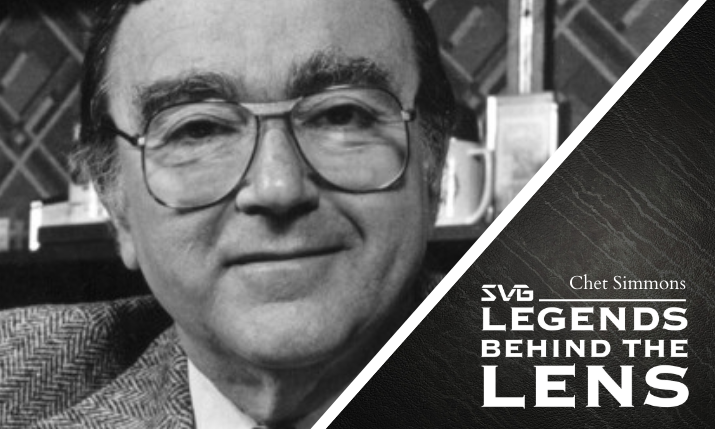Legends Behind the Lens: Chet Simmons
Just when you thought he had accomplished it all, one of sports TV's all-time execs had a new trick up his sleeve
Story Highlights

The story of American sports television is engrained in the history of this nation, rising on the achievements of countless incredible men and women who never once appeared on our screens. During this pause in live sports, SVG is proud to present a celebration of this great industry. Legends Behind the Lens is a look at how we got here seen through the people who willed it to be. Each weekday, we will share with you the story of a person whose impact on the sports-television industry is indelible.
Legends Behind the Lens is presented in association with the Sports Broadcasting Hall of Fame and the SVG Sports Broadcasting Fund. In these trying times — with so many video-production professionals out of work — we hope that you will consider (if you are able) donating to the Sports Broadcasting Fund. Do so by visiting sportsbroadcastfund.org.
___________________________
The word fearless is often associated with acts of heroism, in particular those that put one’s life at risk. A career in live sports production also requires being fearless. Night after night, live cameras, audio, and graphics roll with the ever present threat of something going wrong and impacting thousands, if not millions, of people.
But Chet Simmons, one of the early pioneers at ABC Sports who later became the first president of NBC Sports, ESPN, and even the first commissioner of the United States Football League, took the concept of “fearless” to a new level for an executive. Many executives at the level he reached become comfortable with their success and, consequently, afraid of change. Simmons not only seemed to be comfortable with change: he pursued it.
“He liked the challenge of starting a new operation,” Chuck Pagano, EVP of technology, engineering and operations for ESPN, recalls of the early (and long) days at ESPN working alongside Simmons.
Three months after ESPN launched, Simmons told the New York Times, “Twenty-four hours of sports sounds like a lot but not in the concept we call narrow-casting. Cable subscribers have about 18 channels to choose from.”
In those early days, there were often two reactions to what ESPN was trying to accomplish: laughter and the word absurd. But George Bodenheimer, co-chairman of Disney Media Networks/president of ESPN, says that Simmons, working closely with ESPN VP Scotty Connal, shaped ESPN into something that was real and connected with sports fans. Simmons also forged a culture that is still ESPN’s defining advantage in the marketplace, according to Bodenheimer.
“[Chet] provided people in the industry with a standard of excellence that is unmatched by anybody in our generation. What Chet did every place he went, was make that organization better.” – George Grande, former ESPN anchor
“He treated everyone like a colleague,” says Bodenheimer, who was a driver in the mailroom at the time. “And you had these two icons from the broadcast-sports industry who moved to a funny cable startup and got the best out of everybody.”
Among Simmons’s key contributions is creation of SportsCenter, a highlights and news program that became required viewing for sports fans across the country. He also acquired TV rights for the early rounds of the NCAA Men’s Basketball Tournament as well as the NFL Draft.
“Broadcasting the NFL Draft was considered unusual because it was basically televising a business meeting,” says Bodenheimer. “But today it gets ratings as a high as an NFL game and is a jewel among the NFL’s assets.”
Simmons’s career in sports broadcasting began in 1957, when he joined Sports Programs Inc., which later was known as ABC Sports. Over seven years, Simmons helped create programs like Wide World of Sports, establishing ABC Sports as TV’s leading sports division. He left ABC to join NBC, where he spent 15 years before running ESPN.
In 1982, Simmons left ESPN and moved to another startup: the USFL, a spring and summer football league that hoped to become a strong alternative to the National Football League. As commissioner, he made a deal with ESPN to carry its games.
In later years, he was a consultant and spent the majority of his time on Tybee Island outside Savannah, GA, after moving to Savannah in 1986. He and his wife, Harriet, married for 53 years, had four children — Pam, Jed, Pete, and Nikki — and nine grandchildren. Simmons died on March 25, 2010 at the age of 81.
“He was calm, reflective, and encouraging, and I learned a lot from Chet as a person,” said former ESPN CTO Chuck Pagano. “He was the quintessential father figure.”
The video in this profile was originally produced in 2010. For more on the life and career of this industry legend, visit their profile at the Sports Broadcasting Hall of Fame.
